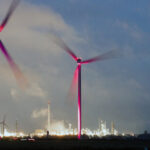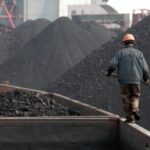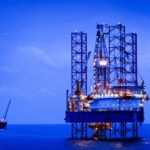Energy News Beat
FREIBURG taz | Even a hefty funding commitment couldn’t save the project: the plant in the Schleswig-Holstein town of Heide (Dithmarschen district), which was once praised as “the largest electrolyzer in Germany for producing green hydrogen”, will not be realized after all. The construction costs of the industrial plant, which should have an output of 30 megawatts, are simply too high.
The Heide refinery started the project together with the companies Ørsted and Hynamics – a subsidiary of the French energy group EDF – three years ago. Other partners such as the building materials producer Holcim joined. The plan was to use excess wind energy to produce hydrogen. The situation on site is favorable: the refinery has been connected to a hydrogen pipeline since 1964 and to a system of salt caverns that are considered suitable for storing hydrogen. The hydrogen should be used for heating, in vehicles and in industry.
That’s why Stadtwerke Heide, which was publicly funded with around 36 million euros and wanted to market the hydrogen produced together with the Thüga municipal utility network under the label “GrünerHeizen”, was also on board with the “Reallabor West Coast 100”, which was publicly funded with around 36 million euros.
In a sub-area of the city’s gas network, the heat supply for customers was to be made more climate-friendly “without additional costs and with the same heating comfort” by initially adding 10 and later 20 percent hydrogen to the natural gas. The municipal utilities spoke of a “model that can become a role model for the energy transition in the heating sector for the whole of Germany”.
Technically possible, but not economically viable
The flyers for customers were ready long ago, but then it became clear that not everything that is technically possible is also economically viable. This is also due to a fundamental problem that every operator of an electrolyzer faces. On the one hand, the high capital costs suggest that each system should run for as long as possible – ideally more than 8,000 hours per year.
On the other hand, this means that not only cheap excess electricity (in this case wind power) can be used, but that you also have to purchase electricity in those hours when it is scarce on the market and correspondingly expensive – and above all not green electricity – is.
On the other hand, if hydrogen is only produced in the hours of excess wind and correspondingly low electricity prices, the running time of each electrolyzer will inevitably remain short. In this case, the high fixed costs can only be allocated to a relatively few operating hours, which also makes long-term coverage of the investment costs hardly realistic. In view of this constellation and the high investment costs, those involved in the project in Heide now pulled the ripcord.
The larger “West Coast 100” project remains
However, the project partners want to stick to an even larger follow-up project – it is largely the same as the “West Coast 100” project. This “scaling scenario” is called “Hyscale 100” and consists of an electrolyzer for “large-scale hydrogen production,” as the company involved, Holcim, puts it. The Heide refinery speaks of an electrolyzer capacity of up to 500 megawatts that could be created on its premises in the next three years. The capacity should then be “scaled up to up to 2.1 gigawatts”.
There should be plenty of subsidies : the Schleswig-Holstein state government has already budgeted 194 million euros for this. Since this facility falls under the EU’s so-called IPCEI projects (Important Projects of Common European Interest), more than twice as much funding from the federal government is likely to be added. This would result in a funding amount in the mid three-digit million range – which might then be enough to at least implement this project.
The post Hydrogen project canceled :Electrolyzer is simply too expensive appeared first on Energy News Beat.








